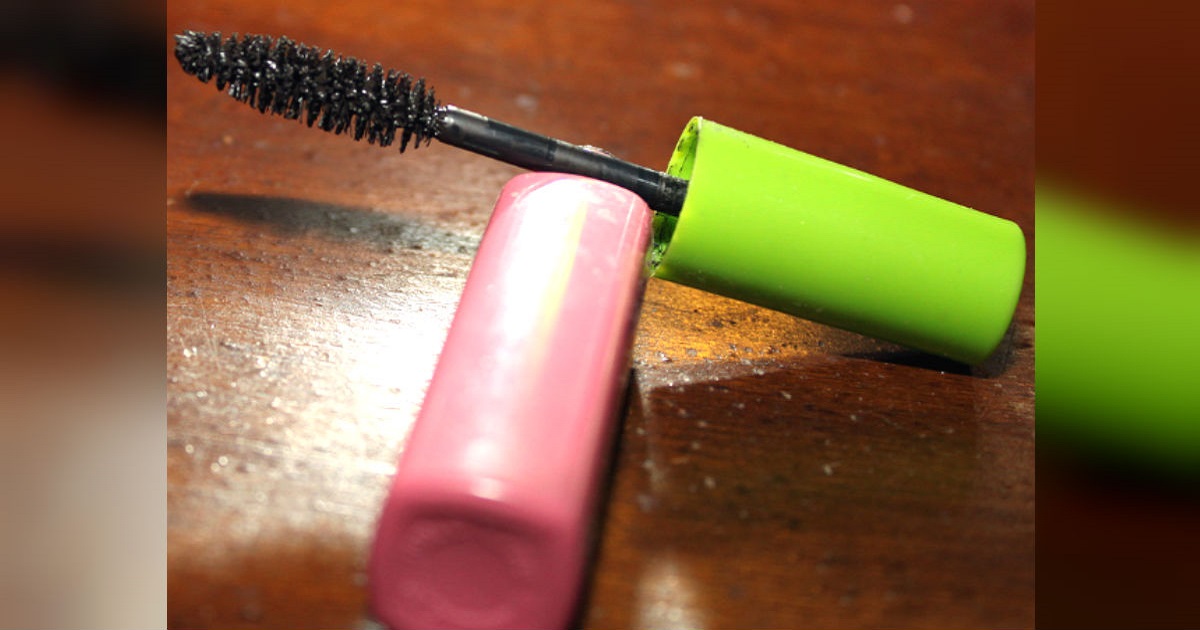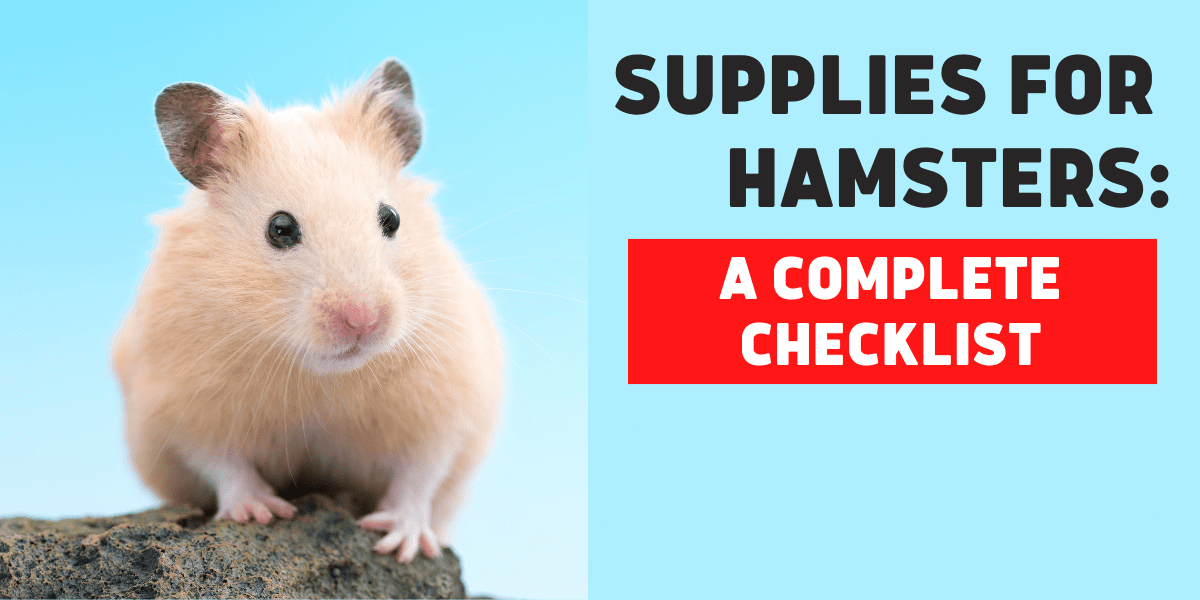
What Do You Need for Hamster Supplies
Hamsters make great pets. They’re affectionate, cute, and relatively low-maintenance. Before you bring your new furry friend home, though, there are a few things you’ll need to do to get your home hamster-ready. Here is a complete checklist of everything you’ll need to buy for your new pet.
Cage
Here are some things to keep in mind when selecting a cage for your new hamster:
- Size: Hamsters need plenty of space to run and play, so choose a cage that is at least 24 inches long and 12 inches wide. Opt for a cage with multiple levels, giving your hamster more room to explore.
- Bar spacing: Make sure the bars on the cage are spaced no more than ½ inch apart. This will prevent your hamster from escaping and getting injured.
- Materials: Avoid cages made of plastic or wire mesh; these can be harmful to your hamster’s health. Instead, look for a cage made of solid wood or metal.
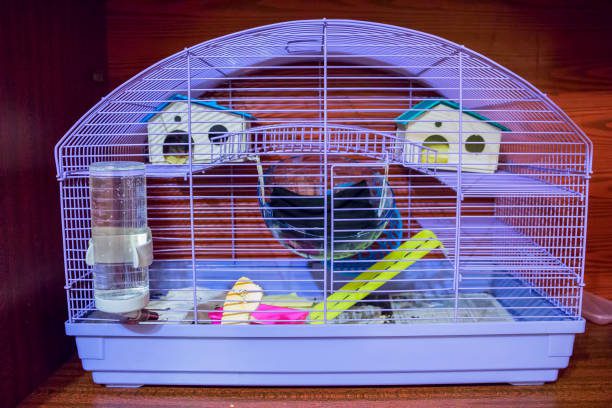
Exercise Wheel
An exercise wheel is a great option if you’re looking for the perfect way to keep your hamster healthy and active. Here’s a guide to selecting one.
- First, consider the size of your hamster. A smaller wheel will be more appropriate for a dwarf hamster, while a standard-sized wheel will be better for a Syrian hamster.
- Second, think about where you’ll be placing the wheel. If you have a small cage, you’ll need to choose a compact wheel that can fit inside.
- Third, decide what type of material you prefer. Some hamsters prefer plastic wheels, while others like metal or wire wheels.
- Lastly, make sure to choose a wheel with a smooth surface to prevent your hamster from getting injured.
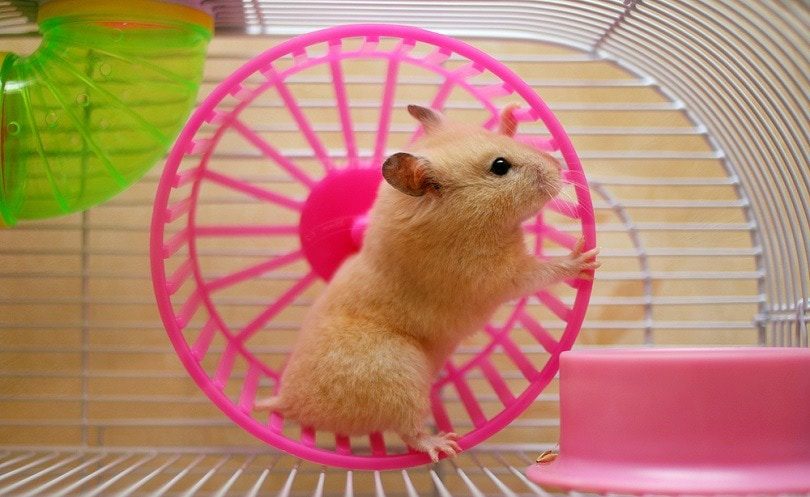
Water Bottle
Ensure your hamster has fresh water by investing in a water bottle that can be attached to the side of its cage.
- Size: Make sure the water bottle is small enough for your hamster to reach easily. They should be able to drink from it without having to climb up or stretch too far.
- Material: Look for a water bottle made from safe, non-toxic materials. BPA-free plastic is a good option. Avoid metal bottles, which can rust and leak toxins into the water.
- Attachment: The water bottle should be easy to attach to the side of the cage, so it doesn’t tip over or fall out. Some bottles come with a clip that secures them in place.
- Nozzle: Choose a water bottle with a nozzle that’s the right size for your hamster. Too small and they’ll have trouble drinking from it; too large and the water will spill out. Look for a nozzle big enough for your hamster to stick their tongue into.
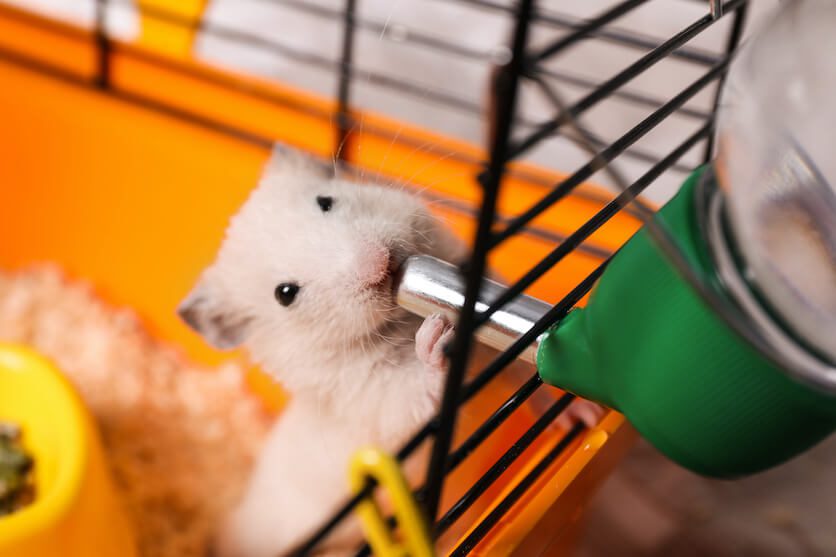
Food Dish
Your hamster will need a place to eat its food, so make sure to get a food dish that can also be attached to the cage.
- First, you’ll want to choose a food dish that is the right size for your pet. A dish that is too large can make it difficult for your hamster to access the food, while a dish that is too small can cause your hamster to spill its food.
- Second, you’ll want to choose a food dish made of safe materials. Some hamsters like to gnaw on their food dishes, so look for one made of non-toxic materials.
- Finally, you’ll want to find a food dish that is easy to clean. Hamsters are notoriously messy eaters, so you’ll want a dish that is easy to wipe down.
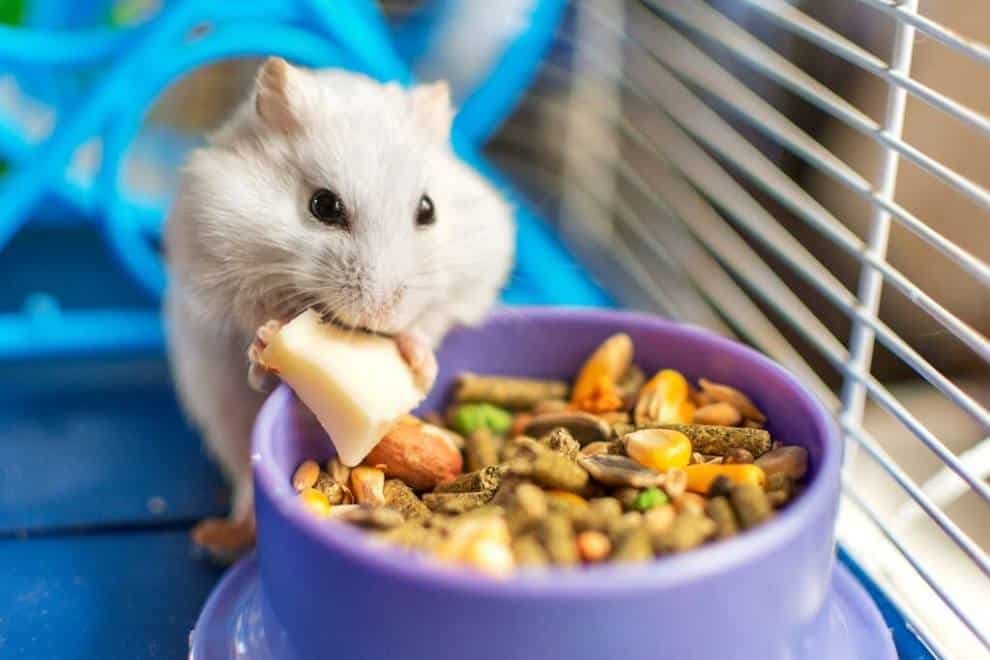
Hamster Food
When it comes to food, it’s important to get high-quality pellet food specific to hamsters. Be sure to avoid foods high in sugar or fat, as these can harm your hamster’s health. You can also supplement their diet with some fresh vegetables and fruits.
- First, you’ll want to ensure that the food is high in nutrients and low in sugar. Hamsters have a sweet tooth, but too much sugar can lead to health problems down the road.
- Second, you’ll want to choose a food that is easy for your hamster to eat. Some types of food, like pellets, can be complex for hamsters to break down and digest.
- Third, you’ll want to ensure that the food you choose is appropriate for your hamster’s life stage. For example, baby hamsters have different nutritional needs than adult hamsters.
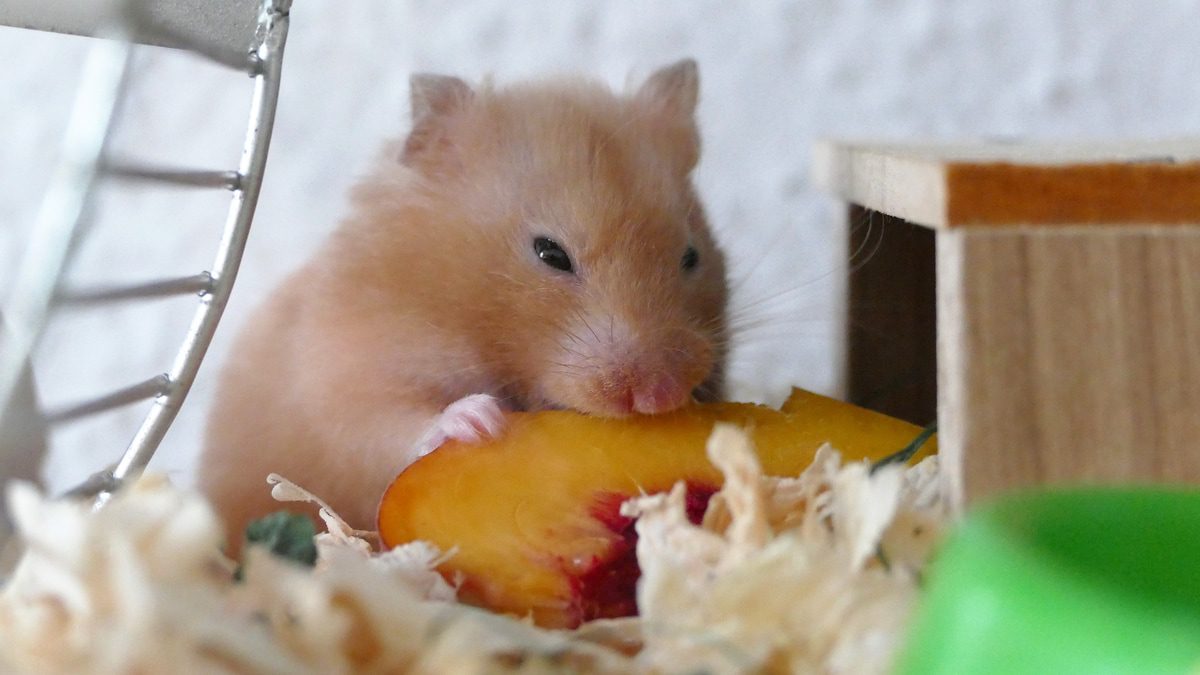
Chew Toys
Hamsters like to chew on things, so it’s crucial to provide them with some safe chew toys to prevent them from damaging their teeth on the bars of their cage. Look for toys that are made specifically for small animals, like hamsters.
- First, consider the size of your hamster. Smaller hamsters will need smaller toys that they can easily carry and manipulate. Larger hamsters, on the other hand, will need toys that can withstand some gnawing.
- Second, think about the material of the toy. Some hamsters like to chew on soft materials like cloth or paper, while others prefer harder materials like wood or plastic. It’s a good idea to offer your hamster various materials to chew on so they can find what they like best.
- Finally, consider the shape of the toy. Some hamsters prefer long, thin objects to gnaw on, while others prefer shorter, thicker objects. Again, it’s a good idea to offer a variety of shapes and sizes so that your hamster can find what they like best.
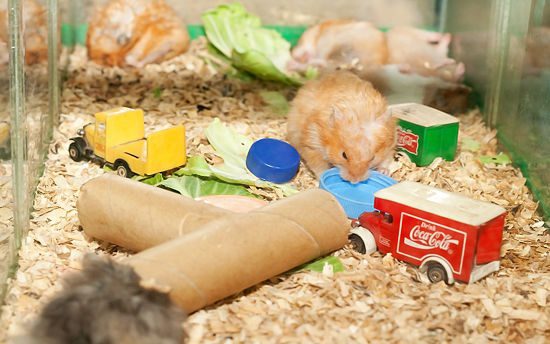
Bedding
Line the bottom of the cage with bedding material. This can be shredded paper, wood chips, or aspen shavings.
- You’ll want to choose a material that is absorbent and dust-free. A good option is Carefresh, made from recycled paper products and gentle on your hamster’s skin.
- You’ll also want to avoid bedding containing chemicals or fragrances which can harm your pet.
- Avoid using cedar or pine shavings, as they can harm your hamster’s respiratory system.
- Another factor to consider is the size of the bedding particles; if they’re too small, your hamster could accidentally ingest them, which can lead to digestive problems.
- Ultimately, the best way to choose the right bedding for your hamster is to ask your veterinarian for recommendations. They’ll be able to help you select a product that meets your pet’s individual needs.
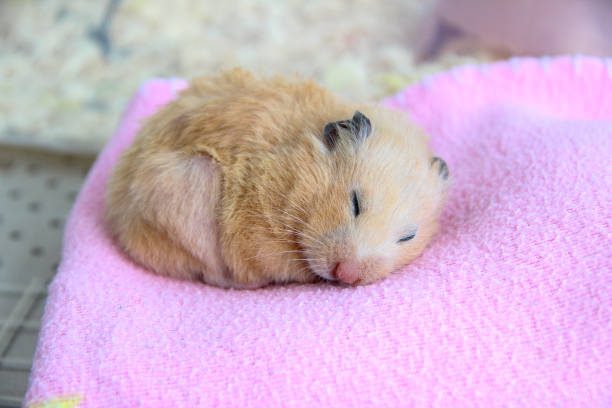
Nesting Material
- First, consider the climate in which you live. If you live in a hot climate, you’ll want to choose a nesting material to help your hamster stay cool, such as aspen shavings or Carefresh bedding. On the other hand, if you live in a cold climate, you’ll want to choose a material that will help your hamster stay warm, such as cotton balls or recycled paper.
- Second, think about your hamster’s personality. If your hamster is shy or anxious, you’ll want to choose a soft nesting material to help it feel safe and secure. If your hamster is more outgoing and playful, on the other hand, you may want to choose a more substantial material that it can burrow into and play with.
- Finally, consider your preferences. Some nesting materials (such as wood shavings) can be dusty, so if you’re allergic or have asthma, you’ll want to avoid these types of materials. Others (such as fleece bedding) can be more expensive than others, so if you’re on a budget, you’ll want to keep this in mind when selecting.
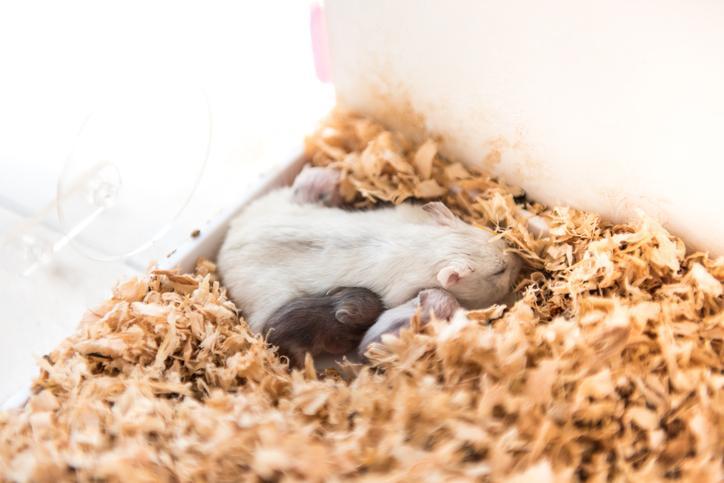
Hiding Place
Finally, don’t forget to include a hiding place in your hamster’s cage. This can be a wooden hut or a fabric tunnel. Hamsters like to have a place where they can go to feel safe and secure.
- First, the hiding place should be large enough for your hamster to turn around comfortably.
- Second, it should be a safe material for your hamster to chew on.
- Lastly, the hiding place should be in a quiet area of your home where your hamster will not be disturbed.
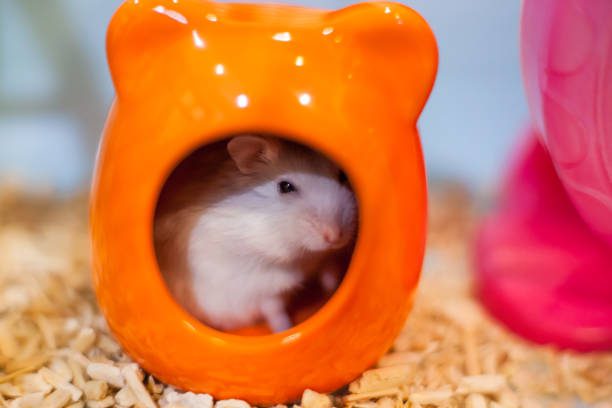
Important reminder:
- A good rule of thumb is choosing a hiding place roughly the same size as your hamster’s cage. This will provide ample space for your hamster to hide and feel secure.
- Regarding materials, avoid anything that could splinter or break off, such as plastic or glass. Instead, opt for a soft fabric that your hamster can burrow into. As for location, try to find a spot away from foot traffic and noisy household appliances.
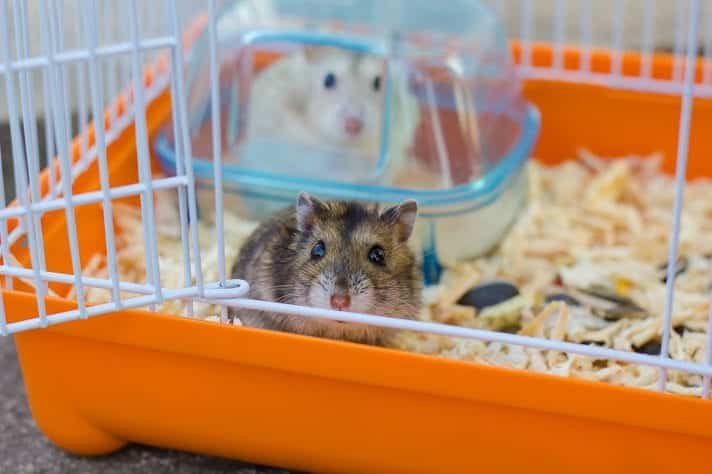
Final Thoughts
Purchasing everything on this checklist will help create a safe and comfortable home for your new hamster. Remember to do your research to find the best products for your pet, and always consult with a veterinarian if you have any questions about your hamster’s care. Your hamster will be happy and healthy with the proper supplies and maintenance.
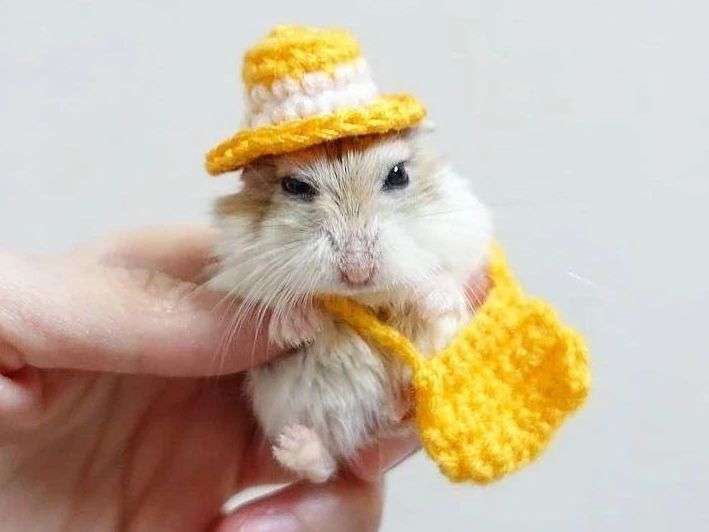
Frequently Asked Questions
What a hamster needs in its cage?
The cage must have a sizable, useable floor area and adequate tube room and levels. There should be many activities and entertainment options in your hamster’s habitat. In addition, there should be many cage nesting boxes and sleeping spaces.
What do hamsters enjoy most?
Hamsters most enjoy activities that allow them to explore and play. This might include running on a wheel, playing with a ball, or chewing on toys. Hamsters also enjoy hiding places where they can feel safe and secure.
Do hamsters need sand baths?
Hamsters do not need sand baths, but some enjoy them. If you decide to give your hamster a sand bath, use clean, fine-grained sand and supervise your pet to prevent it from ingesting the sand. Sand baths can also be messy, so you may consider placing a mat under the sand bath to protect your floors.
Do hamsters need a night light?
No, hamsters do not need a night light. They are active at night and will sleep during the day.

